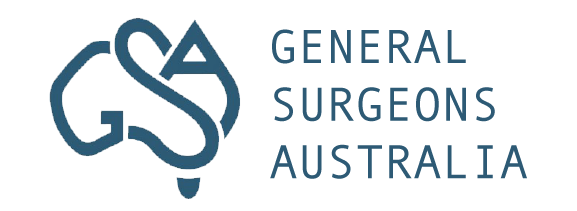Gynaecomastia
What is Gynaecomastia?
Gynaecomastia is the enlargement of breast tissue in males, typically caused by an imbalance between the hormones oestrogen and testosterone. It can affect one or both breasts and can be temporary or persistent, depending on the underlying cause. This condition is benign, meaning it is not cancerous, and is usually the result of natural hormonal changes, medication use, or certain medical conditions.
Gynaecomastia may appear during different stages of life, such as infancy, puberty, or older age, when hormone fluctuations are more common. While it is not dangerous, it can cause discomfort or emotional distress, leading some individuals to seek medical or surgical treatment.
How Does Gynaecomastia Impact Your Anatomy and Health?
Gynaecomastia primarily affects the male chest by causing the breast tissue to enlarge, leading to physical changes in appearance and, in some cases, physical discomfort. Here’s how it impacts anatomy and health:
- Breast Tissue Growth: In men with gynaecomastia, the glandular tissue (breast tissue) increases in size, often leading to a more noticeable chest or breast area. This can create a softer, fuller chest contour.
- Tenderness and Sensitivity: Some men may experience tenderness, pain, or sensitivity in the breast area, particularly when the condition first develops. This is more likely if the condition is associated with hormonal changes, such as during puberty.
- Psychological Impact: Gynaecomastia can lead to embarrassment or self-consciousness, especially in social situations where the chest area is visible, such as swimming or exercising. For some, this emotional impact can lead to anxiety, depression, or avoidance of certain activities.
- Health Considerations: While gynaecomastia itself is not harmful, it can sometimes indicate an underlying health condition, such as liver disease, kidney failure, or a hormonal imbalance. For this reason, it is important to consult a healthcare professional for an accurate diagnosis.
Causes and Risk Factors of Gynaecomastia
Gynaecomastia occurs when the balance between the hormones oestrogen and testosterone shifts, leading to the growth of breast tissue in men. Various factors can contribute to this hormonal imbalance:
- Natural Hormonal Changes:
- Puberty: During adolescence, hormone levels fluctuate, and some boys may develop temporary gynaecomastia. It usually resolves as hormone levels stabilise.
- Ageing: As men get older, testosterone levels decrease, and oestrogen levels may rise slightly, leading to gynaecomastia, especially in men over 50.
- Infancy: Newborn boys may develop temporary gynaecomastia due to maternal oestrogen passed through the placenta. This usually subsides shortly after birth.
- Medications:
- Anabolic Steroids: Used to enhance muscle growth but can cause oestrogen levels to increase, leading to breast tissue development.
- Anti-androgens: Medications for treating prostate cancer or other conditions affecting hormone levels.
- Certain Antibiotics: Some antibiotics can interfere with hormone regulation.
- Heart Medications: Drugs such as calcium channel blockers and digoxin can contribute to gynaecomastia.
- Anti-anxiety and Antidepressants: Medications such as diazepam (Valium) may cause hormonal imbalance.
- Ulcer Medications: Cimetidine, used for ulcers, can affect hormonal balance.
- Health Conditions:
- Liver Disease
- Kidney Failure
- Thyroid Disorders
- Tumours
- Substance Use:
- Alcohol: Excessive alcohol consumption can lead to liver damage and hormonal imbalances.
- Recreational Drugs: Marijuana, heroin, and amphetamines are known to cause gynaecomastia.
- Anabolic Steroids: Commonly used by bodybuilders, these can disrupt the balance between testosterone and oestrogen.
- Obesity: Fat cells convert androgens into oestrogen, leading to higher oestrogen levels in overweight or obese men. This can contribute to breast tissue growth.
- Hormone Therapy: Men undergoing hormone therapy for prostate cancer or transgender women on hormone replacement therapy (HRT) may develop gynaecomastia due to the increase in oestrogen levels.
Symptoms of Gynaecomastia
The symptoms of gynaecomastia typically involve physical changes in the chest area, but they can also lead to psychological effects. The most common symptoms include:
- Breast Enlargement: The primary symptom is the enlargement of one or both breasts. This enlargement may be symmetrical or affect only one side, and it may be more noticeable in the area directly under the nipple.
- Breast Tenderness or Pain: Some men experience tenderness, sensitivity, or mild pain in the breast area, especially when the condition first develops. This can sometimes be uncomfortable during physical activity.
- Firm or Rubbery Tissue: In men with gynecomastia, the enlarged breast tissue feels firm or rubbery. This distinguishes it from simple fat deposition (pseudo-gynaecomastia) associated with obesity.
- Nipple Discharge (Rare): In rare cases, men with gynaecomastia may notice nipple discharge. If this occurs, it is essential to seek medical advice, as it could indicate other underlying conditions, including breast cancer.
- Psychological Distress: The physical appearance of enlarged breasts may cause self-consciousness, embarrassment, or anxiety, particularly in social situations or when wearing certain types of clothing.
Types of Gynaecomastia
Gynaecomastia can present in different forms, depending on the cause and extent of breast tissue growth. The types include:
- True Gynaecomastia occurs when the glandular breast tissue actually increases. It typically results from hormonal changes and involves firm, rubbery tissue beneath the nipple.
- Pseudo-Gynaecomastia (Lipomastia): In this form, the appearance of enlarged breasts is due to excess fat accumulation rather than an increase in glandular tissue. It is common in overweight or obese men. While it looks similar to gynaecomastia, it is not caused by a hormonal imbalance.
- Mixed Gynaecomastia: Some individuals experience increased glandular tissue and fat deposition in the breast area. This is often seen in older men or those with a combination of risk factors, such as hormonal imbalance and obesity.
- Pubertal Gynaecomastia: This type occurs during adolescence and is caused by fluctuating hormone levels during puberty. It usually resolves on its own as the hormone levels balance out.
- Unilateral vs. Bilateral Gynaecomastia:
- Unilateral Gynaecomastia: Affects only one breast, which can cause asymmetry in the chest.
- Bilateral Gynaecomastia: Affects both breasts, and the enlargement may be symmetrical or vary in size between the two sides.
- Physiological Gynaecomastia: This form occurs naturally in newborns, adolescents, or older men, primarily due to hormonal changes related to specific life stages.
Stages of Gynaecomastia
- Grade 1 (Mild Gynaecomastia):
- Small breast enlargement with minimal excess tissue.
- No noticeable skin excess.
- The chest appears only slightly protruding, and the condition may be subtle.
- Grade 2A (Moderate Gynaecomastia without Skin Excess):
- Moderate enlargement of the breast tissue.
- No significant excess skin.
- The chest may have a more noticeable feminine appearance, but the skin remains tight.
- Grade 2B (Moderate Gynaecomastia with Skin Excess):
- Moderate breast enlargement.
- Presence of some excess skin.
- The chest may droop slightly due to the extra skin, giving it a more pronounced appearance.
- Grade 3 (Severe Gynaecomastia):
- Significant breast enlargement with considerable excess skin.
- The chest has a more feminine breast appearance, with significant sagging.
- Often, this stage requires surgical intervention to remove both tissue and skin.
Diagnosis of Gynaecomastia
- Medical History: The doctor will ask about the patient's medical history, including any medications, family history, and symptoms such as breast tenderness, pain, or nipple discharge. Hormonal disorders, substance use (including alcohol and recreational drugs), and any underlying health conditions will also be discussed.
- Physical Examination: A thorough physical examination of the breast area is performed to assess the tissue's size, texture, and firmness. The doctor will distinguish between true gynaecomastia (involving glandular tissue) and pseudo-gynaecomastia (caused by fat accumulation).
- Blood Tests: Blood tests may be ordered to evaluate hormone levels, such as testosterone, oestrogen, and thyroid hormones, to rule out hormonal imbalances as a cause. Liver, kidney, and thyroid function tests may also be performed to check for underlying medical conditions.
- Imaging Tests: In some cases, imaging tests such as mammograms or ultrasounds may be ordered to examine the breast tissue more closely and rule out the possibility of male breast cancer or other abnormalities. These tests will provide more detailed information if there is suspicion of a tumour or other abnormal growth.
- Biopsy (if needed): If a lump is detected or there are concerns about breast cancer, a biopsy may be conducted to analyse a small sample of the breast tissue. However, this is rare in cases of typical gynaecomastia.
Treatment of Gynaecomastia
- Observation: In many cases, especially in adolescents and young men, gynaecomastia resolves on its own without the need for treatment. If the condition is mild and not causing significant discomfort, doctors may recommend a "wait-and-see" approach.
- Lifestyle Changes:
- Weight Loss: If gynaecomastia is associated with excess body fat, losing weight through a balanced diet and regular exercise can reduce fat in the chest area and improve the appearance.
- Avoidance of Triggers: Stopping the use of recreational drugs, alcohol, or medications that may contribute to gynaecomastia can help prevent further breast tissue growth.
- Medications: In some cases, medications may be used to correct hormonal imbalances. For example, drugs such as tamoxifen or raloxifene, which block oestrogen receptors, can be prescribed to reduce breast tissue growth. These medications are typically considered for individuals with moderate to severe gynaecomastia or those who are not candidates for surgery.
- Hormone Therapy: If low testosterone levels are contributing to the development of gynaecomastia, testosterone replacement therapy (TRT) may be recommended to balance hormone levels. This is usually considered for older men or those with diagnosed hormonal deficiencies.
- Surgery:
- Liposuction: This procedure is effective when gynaecomastia is primarily due to excess fat. A thin tube (cannula) is inserted through small incisions to remove the fat and contour the chest.
- Excision Surgery: If the condition is caused by glandular breast tissue or excess skin, excision surgery may be necessary. The surgeon removes the tissue, which may also reduce the size of the areola or reposition it for a more masculine chest appearance.
- Combination Surgery: Some patients may require liposuction and excision to achieve the best results.
What if Gynaecomastia is Untreated?
If gynaecomastia is left untreated, the impact on physical and emotional health can vary depending on the severity of the condition. Here are some potential outcomes:
- Physical Discomfort: Some men may experience persistent tenderness, pain, or discomfort in the chest area, especially if the breast tissue enlarges over time.
- Psychological and Emotional Impact: Untreated gynaecomastia can lead to significant emotional distress, especially if the condition causes embarrassment or self-consciousness. Men with enlarged breasts may avoid certain social situations, such as swimming or wearing tight-fitting clothing.
- Increased Risk of Breast Cancer (in rare cases): Although gynaecomastia is benign and not cancerous, men with this condition should still be aware of the small risk of male breast cancer. While the risk is very low, it’s important to monitor any changes, such as hard lumps or nipple discharge, and report them to a doctor.
- Persistent or Worsening Appearance: Gynaecomastia that does not resolve on its own may worsen over time, especially if associated with weight gain, substance use, or untreated medical conditions. The breast tissue may become more pronounced, and skin excess may develop, requiring more complex surgical treatment.
- Missed Underlying Conditions: If gynaecomastia is caused by an underlying health issue, such as liver or kidney disease, leaving the condition untreated may worsen these medical problems. Early diagnosis and treatment of any contributing factors are important for overall health.
By addressing gynaecomastia early through lifestyle changes, medical treatment, or surgery, individuals can often avoid long-term physical or emotional complications. If you suspect you have gynaecomastia, it’s important to consult a healthcare professional for evaluation and guidance on the best course of action.









